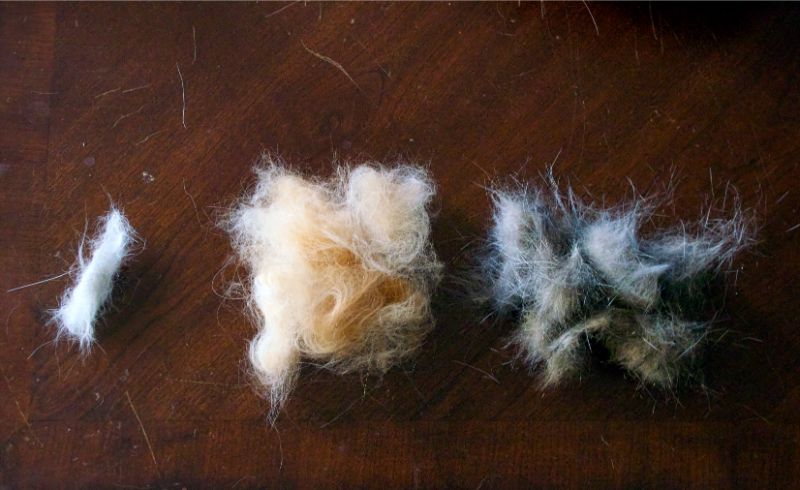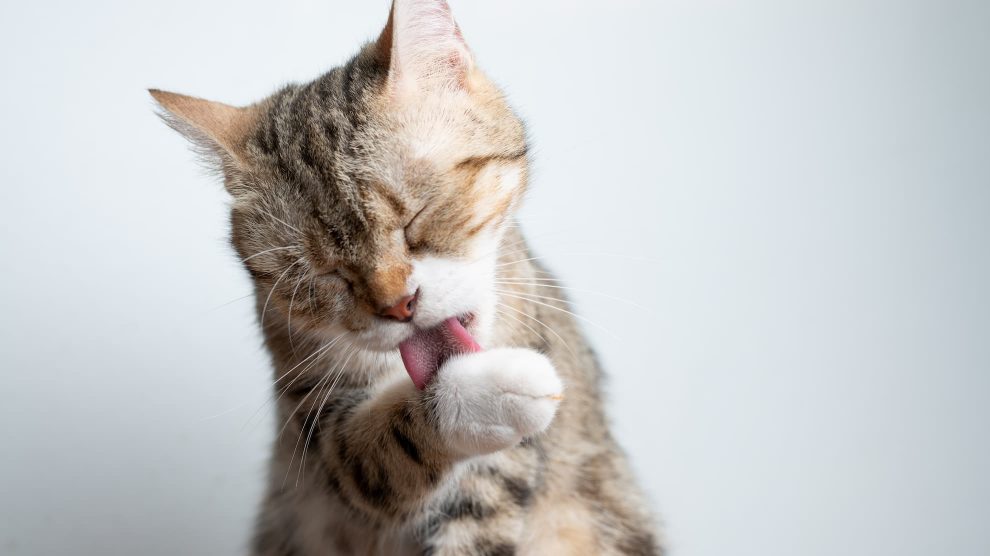Table of Contents
Why Do Cats Get Hairballs?
Do you dedicate a quarter of your day, or maybe even half, to your personal hygiene? What sounds a bit exaggerated for us humans is completely normal for our velvet paws. They lick their fur extensively every day and a lot of hair gets caught on their rough tongue. Studies have shown that an average short hair cat weighing 4 kg swallows around 75 g of hair in this way every year. The cats simply excrete a large part of it in their feces. The rest is regurgitated from the stomach and vomited. It’s unpleasant for us when it happens in the apartment, but it’s completely normal.Are hairballs dangerous in cats?
Problems arise when large amounts of hair collect in the cat’s stomach and clump together to form solid hairballs (trichobezoars), which lead to frequent vomiting or which can no longer be vomited at all. In the worst case, such trichobezoars can cause a life-threatening acute intestinal obstruction (ileus). But chronic problems caused by hairballs can also affect your cat’s quality of life if he repeatedly vomits, has stomach pain, and therefore eats poorly and loses weight. The longer a hairball stays in the stomach or intestines, the larger and harder it can become. First, fat from food accumulates on the hair, forming a solid lump. Later, this lump can even calcify and resemble a stone.
Which cats suffer from hairballs most often?
For example, there is an increased risk of the formation of problematic hairballs:-
- longhair cats
-
- indoor cats
-
- increased hair loss, e.g.:
-
- in the change of coat (spring, autumn)
-
- in case of hair loss due to illnesses
-
- increased hair loss, e.g.:
-
- increased cleaning, for example because of
-
- itching
-
- psychological stress (psychogenic leak alopecia)
-
- increased cleaning, for example because of
-
- Intestinal diseases or administration of medications that inhibit intestinal motor function and thus impair the further transport of hair
How do I know if my cat has hairball problems?
As already mentioned, there is no reason to worry if your cat throws up hair or small hairballs from time to time or if you find hair in the cat’s feces. However, there are some signs you can use to tell if swallowed hair is becoming a problem for your cat. If you see these signs in your cat, you should have the cause checked by a vet:Frequent vomiting due to hairballs
If your cat throws up hair once or twice a week, this is usually still normal. The hairs may be mixed with stomach contents or appear as small, firm hairballs. If the cat vomits more frequently, this could be an indication that it has to produce an above-average amount of hair or that it is suffering from a gastrointestinal illness. If your cat is also losing weight, eating poorly or showing stomach pains, it is essential that you see a veterinarian.Bloody poop from hairballs
Large amounts of hair can irritate the intestinal wall and cause colon inflammation. The cat feces not only contains a lot of hair, but can also be covered by a layer of mucus in which streaks of blood can be found.Nibbling house plants because of hairballs
In the wild, cats use grass and other green plants to absorb mucus and fiber, which makes it easier for them to shed their hair. Indoor cats like to eat cat grass for this purpose. If this is not available to them or if their digestion is excessive, they sometimes eat other plants. Since we humans find many beautiful plants that are poisonous to cats (e.g. orchids, cyclamen and many more), this can quickly become dangerous.Constipation or intestinal obstruction caused by hairballs
Hairballs can become so large and solid that they completely or partially block the intestines. Then the intestine (or stomach) swells in front of the blocked area and fluid flows in, which is very painful and puts a lot of strain on the circulatory system. Common signs of an intestinal obstruction include:-
- Vomiting (Vomits)
-
- diarrhea
-
- Food refusal (anorexia)
-
- weight loss
-
- stomach pain
-
- Rare or no defecation (constipation)
-
- constant urge to defecate, unsuccessful straining
-
- raised skin fold does not disappear immediately (signs of dehydration)
-
- weakness
-
- pale, dry mucous membranes

How can I prevent hairballs in my cat?
Help against hairballs in cats:-
- regular brushing
-
- feeding several times a day
-
- cat grass
-
- fiber-rich cat food
-
- special supplementary food
Regular brushing against hairballs
We can help our velvet paws groom themselves by brushing them to remove loose hair. Especially during the change of coat, when a lot of hair falls out, this is a good way to protect them from hairballs forming. Because most hairballs appear during the change of coat. Since long-haired cats develop trichobezoars much more frequently, regular brushing is not only useful during the change of coat, but throughout the year.Feeding several times a day against hairballs
To ensure that the hair does not accumulate in the stomach, but is transported quickly through the intestines, it helps to offer the cat several small meals. With every small portion of food, some hair also begins its journey through the intestines towards the litter box.Cat grass against hairballs
Especially if your cat is a house cat without freedom of movement, her cat grass will help to get rid of hair that has been swallowed, because the fibrous stalks encourage the hair to be vomited. For this purpose, outdoor cats eat grass and parts of plants outside, so they regulate the “fiber content” in their food themselves, while indoor cats depend on us providing them with suitable plants in the house. Cat grass is actually not a specific type of grass, but mostly a mixture of different types of grain (e.g. wheat, oats, millet, …) that can be purchased in advance or in seed packets. The tender stalks grow quickly and are easy to care for. They just shouldn’t get moldy because that’s unhealthy for the cat. Cyprus grass, which is sometimes sold commercially under the name cat grass, is not recommended because it has such sharp edges that it can injure the cat’s mucous membranes.High-fiber anti-hairball food
Cat food with an increased proportion of so-called dietary fibers (fiber and mucilage) helps the cat excrete more hair in the feces.-
- Fiber (insoluble fibers, e.g. cellulose) stimulates intestinal activity.
-
- Mucilage (soluble fibers, e.g. psyllium) ensure that the feces does not become too solid and facilitate excretion by forming a protective gel.

Supplementary food against hairballs
Because so many cats are affected by hairballs, there are many products available to help them eliminate the inevitable hairballs and prevent the formation of dangerous bezoars. They are all well tolerated, but must not be overdosed.Cat malt
Many cat owners use malt pastes to prevent hairballs, since most cats like to lick cat malt off their fingers. The paste makes the hair balls in the stomach more slippery and has a slightly laxative effect. In Dr. Hölter’s online shop you will find, for example, the cp-Pharma Laxative malt paste . By the way: Milk or cream also have a laxative and vomiting-promoting effect, because cats cannot digest milk sugar and are lactose intolerant. Maybe that’s where the typical image of the cream-licking cat comes from? But if you’ve ever seen a lactose-intolerant person suffer from stomach pain, you certainly don’t want to do that to your cat on a permanent basis.Oil-based hairball products
Alternatively, there are pastes or chewing drops with oils (e.g. indigestible paraffin oil), which help swallowed hairs slip through the digestive system more easily, e.g-
- Vetoquinol Bezo-Pet
-
- Alfavet FeliGum Hairball